|
Verax P14 From All
Angles |
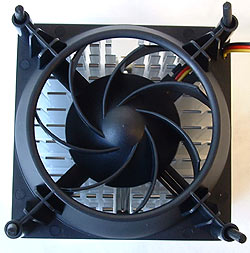 |
The Fan:
The seven bladed
impeller on this 25mm thick fan creates a small amount of airflow and
practically zero noise. Compared to a traditional heatsink, the CAIRdB is
pretty revolutionary - but it is important to keep in mind that this
heatsink is only officially listed to support the AthlonXP
1900+ in a stock configuration. Overclocking would not be a good idea,
but use in a zero noise system might be just fine.The fan uses two NIRO ball bearings and is temperature controlled
to
run at 1600-3100RPM (20C-43C) depending on temperature. connects to the motherboard via a 3-pin fan
header which supports RPM monitoring. |
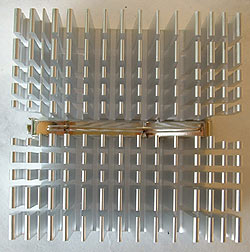 |
Top: The heatsink is based on a very wide spacing of pins
and uses a locking clip design to prevent shifting once installed on the processor.
The extrusion is pretty simple and what
makes it really interesting is that the fan attaches with not screws, but small rubber feet that lock into
place. This prevents any vibrations from moving through the heatsink and potentially causing other noises in the
case.
|
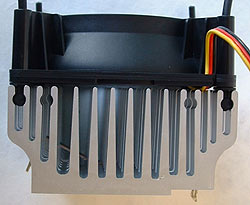 |
Side
A: The fins on the extrusion
are all rather thick to what is the standard these days. However
with the relatively low amount of air flow that comes from the fan the spacing is probably well suited. The little rubber feet which hold the fan in place lock into small circular holes in the frame of the heatsink. The base measures 6mm thick and the fins range from 3.75mm - 1.5mm at the tips. Fins are spaced ~3mm apart at the base.
|
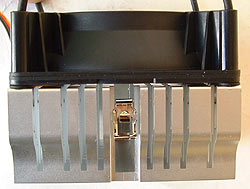 |
Side B:
The side of
the heatsink has an assortment of cross cuts which help
to increase surface area and induce turbulence within the fin structure of the heatsink. The
clip is tool based but works well. Given the overhang of the heatsink extrusion as it transitions
from a base width of 64mm to 80mm make it impractical to use a thumb clip. |
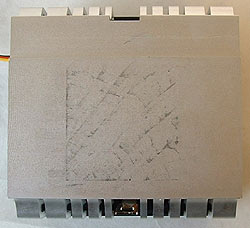 |
Heatsink Base:
It is hard to see but the base is machined perfectly flat.
The heatsink comes with a small pre-applied thermal pad which we removed for our
tests to keep things consistent. The base is undercut 2mm to allow for socket
cam clearance. |


